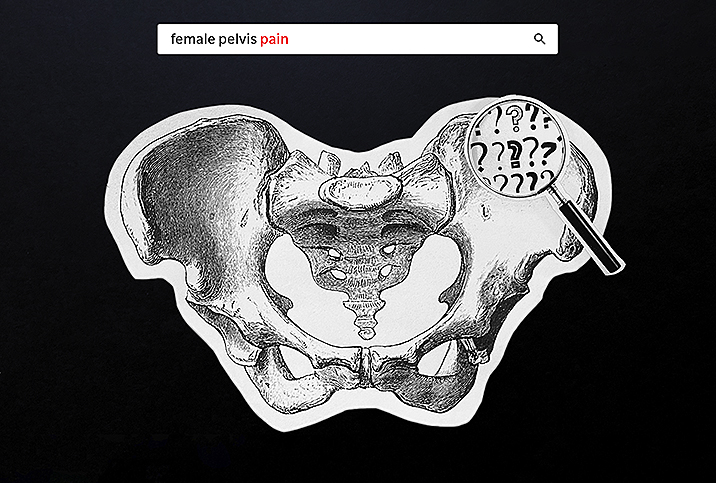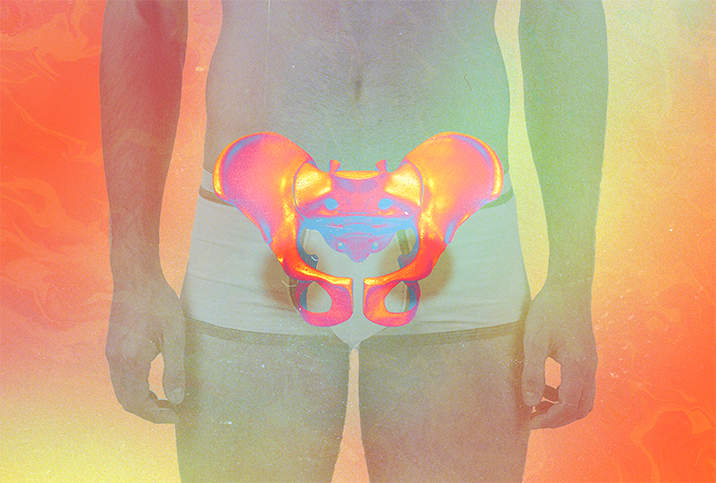Explore the Causes of Pelvic Pain

Pelvic pain is experienced by many women and men alike. According to the National Institute of Child Health and Human Development, some 30 percent of women worldwide deal with either constant or intermittent pain in their pelvic region that interferes with their daily comfort, work and sex lives.
“So many people experience pelvic pain at some point in their lifetimes. It is way underreported because people don’t talk about it, but it is not something people need to live with,” said Gopi Pillai, PT, DPT, PRPC, whose Northern Virginia-based physical therapy practice specializes in pelvic health.
The good news: The causes often can be found and addressed with a variety of targeted treatments, whether pelvic pain manifests as intermittent discomfort, pain during sex or round-the-clock pain.
Possible causes
There’s a lot going on in the pelvis. It’s home to the bladder and urinary tract, the intestines and the pubis; as well, it houses the uterus, fallopian tubes, ovaries and vagina in women, and the penis in men. The pelvis’ musculature and supportive tissue are essential to many daily functions, including good posture.
Some medical practitioners and other well-meaning healers still think pelvic pain is “all in your head,” but don’t settle for this diagnosis. Addressing the body-mind connection is essential in treatment, and depression may play a role, but pelvic pain also has many physical roots.
A few possible causes of pain below the belt include the following conditions:
Menstrual discomfort. Cramps and other pain during periods are not unusual, but they’re a problem if they interfere with a woman’s ability to work and live her ordinary life.
Endometriosis. This condition occurs when cells that ordinarily only line the uterus grow outside of it, in the abdominal cavity. Endometriosis can cause pain to happen frequently, during periods or sex, or not at all.
Uterus issues. An enlarged uterus with uterine fibroids can cause pelvic pain.
Infections. Acute or chronic pelvic infections, including bladder infection or pelvic inflammatory disease where there is an infection in the female organs, are common sources of pelvic pain.
Urinary issues. Urination problems can include small leakages, full-out accidents, urgency and increased frequency due to any one of myriad issues, such as cystitis or painful bladder. Pregnancy, childbirth and hormonal changes increase a woman’s likelihood of experiencing urination issues. Men can sometimes have urinary issues as well, either due to poor posture while at a desk or drinking too many beverages that irritate the bladder. Increased weight also can contribute to urinary issues, including incontinence.
Digestive disorders. Constipation and irritable bowel syndrome, among other digestive-tract maladies, can be painful, inconvenient and uncomfortable.
Pelvic floor disorders. The pelvis has a system of muscles, ligaments and tissues that make up what is known as the pelvic floor. If the pelvic floor is impacted by poor posture, tension, injury or any number of other problems, a person may experience issues with daily comfort, sex, using the restroom and more. Different issues in the pelvic floor will create a variety of symptoms. An extreme example of this is a pelvic organ prolapse, which will cause organs in the pelvis to drift out of place.
Menopausal symptoms. When a woman stops having periods, the hormone levels in her body change dramatically. The resulting thinning of vaginal tissue and dryness may contribute to pain, especially during sex.
Looking for pelvic pain solutions
Solutions for pelvic pain are as varied as the issues that cause it. Working with the pelvic musculature and connective tissue via physical therapy is helpful for some problems, but other conditions may require medicine, hormonal treatment, surgery or lifestyle changes, including diet, posture or stress reduction.
Start by having a conversation with your doctor or a physical therapist who specializes in the pelvis, and be open to meeting with additional practitioners if your problems are dismissed or inadequately addressed.


















